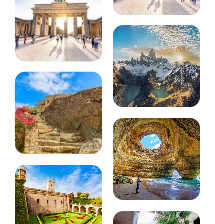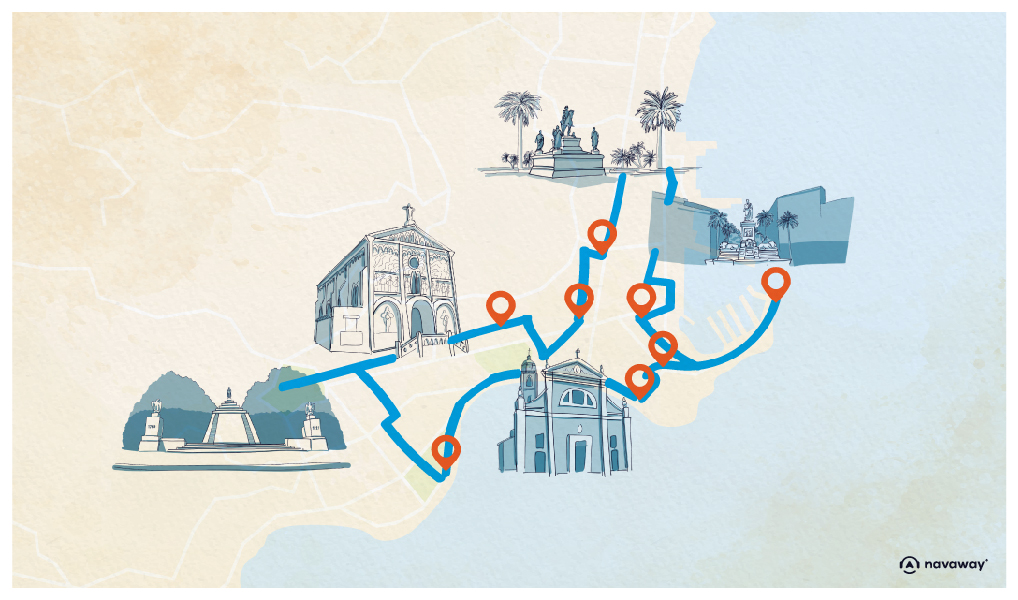
Discover the 10 must-see places to visit in Corse-du-Sud
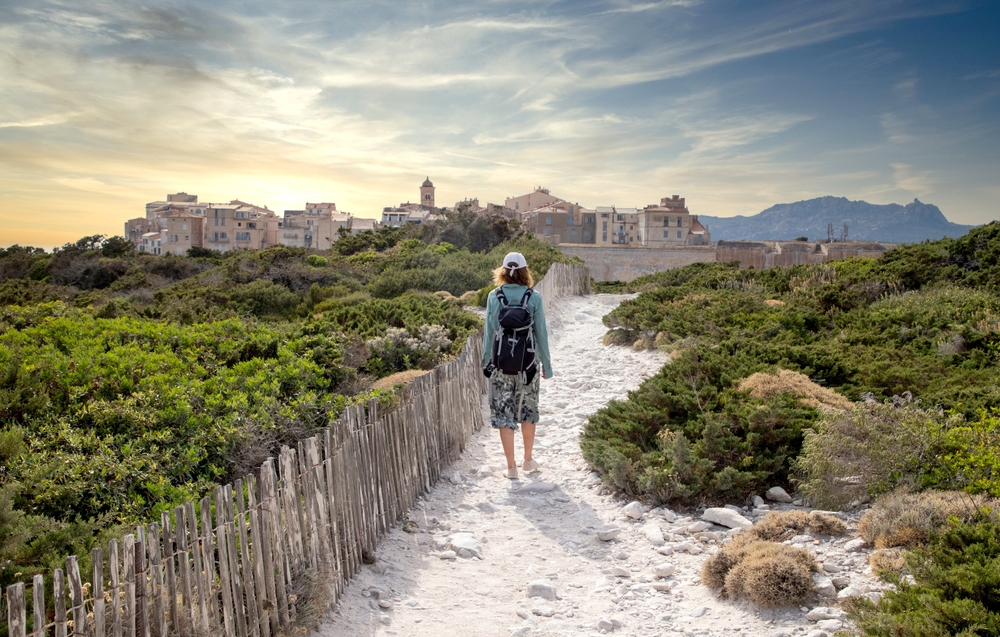
Corse-du-Sud is a dream destination that combines turquoise seas, majestic mountains and authentic villages. With Bonifacio perched on its cliffs, the heavenly beaches of Palombaggia and the Aiguilles de Bavella, this region offers a breathtaking diversity of landscapes. Here is our selection of the 10 must-see places to visit in Corse-du-Sud and make the most of the Isle of Beauty.

Also read the Ajaccio guide :
- What are the best things to do in Ajaccio?
- The best hotels to stay in Ajaccio
- What to do around Ajaccio in Corse-du-Sud
- 15 not-to-be-missed excursions around Ajaccio
- Camping holidays in Porto-Vecchio: nature, relaxation and beaches in Southern Corsica
- Visit the Sanguinaires islands in Corsica
- The 20 most beautiful beaches in France
1. Bonifacio, the citadel perched on the cliffs

It’s impossible to visit Corse-du-Sud without stopping off at Bonifacio, the jewel in the crown of southern Corsica. Perched 70 metres above the Mediterranean, this medieval town fascinates visitors with its exceptional location on white limestone cliffs. Founded in the 9th century by the Tuscan marquis Boniface, the town has retained its authentic character, with narrow cobbled streets, houses with colourful facades and an imposing citadel.
The visit begins at the Bastion de l’Étendard (Montée Rastello, 20169 Bonifacio, rated 4.4/5 on Google for 1,932 reviews), which offers an exceptional panoramic view of the Bouches de Bonifacio and nearby Sardinia. Don’t miss theEscalier du Roi d’Aragon (Montée du Rastello, 20169 Bonifacio, rated 4.4/5 on Google out of 2,411 reviews), 187 steps cut into the cliff face plunging down to the sea. Legend has it that it was dug in a single night by Aragonese troops during the siege of 1420.
To take full advantage of the beauty of the area, take a boat trip to explore the sea caves and admire the cliffs from the sea. The months of May, June and September offer ideal conditions for visiting Bonifacio, avoiding the summer crowds while enjoying pleasant weather.
2. Paradise beaches: Palombaggia, Santa Giulia and Rondinara
Corse-du-Sud is home to some of the most beautiful beaches in the Mediterranean, picture-postcard beaches with fine white sand, turquoise waters and umbrella pines. Among them, Palombaggia beach (20137 Porto-Vecchio, rated 4.3/5 on Google for 6,221 reviews) is the epitome of the Mediterranean dream. Voted France’s most beautiful beach in 2019, it stretches for around 12 kilometres and is divided into several coves: Pini, Cala di Lume and Tamaricciu.
A little further north, the beach at Santa Giulia (20137 Porto-Vecchio, rated 4.0/5 on Google for 5,280 reviews) offers a 2-kilometre lagoon perfect for families. The water is shallow and crystal clear, ideal for paddling, kayaking or simply swimming. The beach restaurants offer the chance to sample local specialities with your feet in the sand.
Finally, the beach at Rondinara (20137 Bonifacio, rated 4.6/5 on Google for 1,510 reviews) is surprisingly perfectly rounded, creating a protected bay. This natural, unspoilt beach has an authentic, wild feel. To avoid the crowds, opt for early morning or late afternoon visits, and book your parking in advance during the summer.
3. Ajaccio, Napoleon’s imperial city
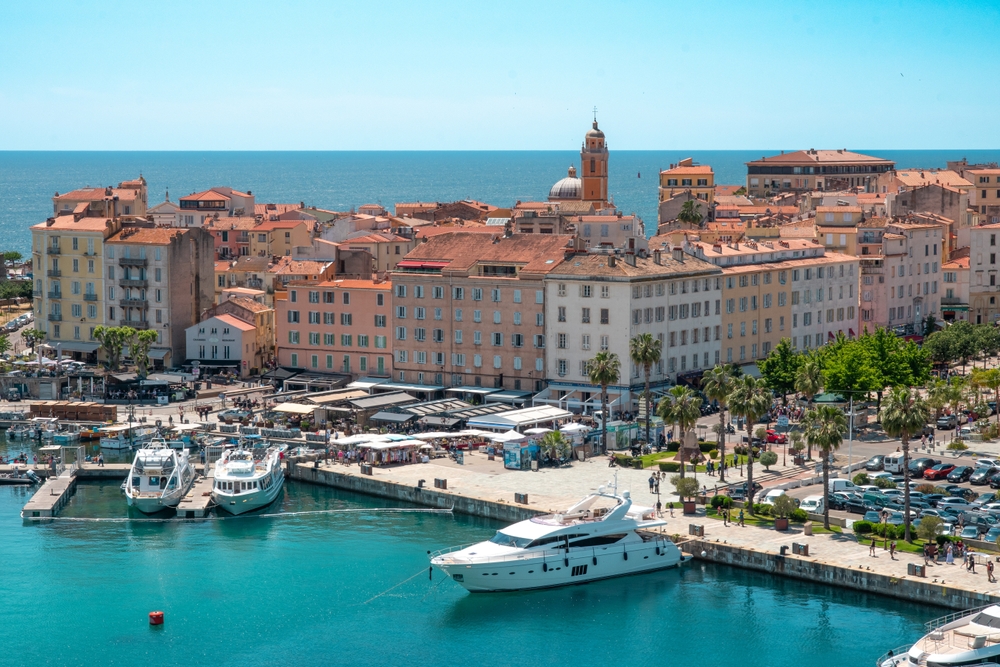
Download the audio tour to discover Ajaccio on foot and on your own
The capital of Corse-du-Sud, Ajaccio is inextricably linked with its most illustrious son, Napoleon Bonaparte. This dynamic town on the shores of the Gulf offers a harmonious blend of history, culture and the Mediterranean way of life. The Navaway audio tour will enable you to discover the town’s 18 major places of interest on your own, from the Place du Général de Gaulle to the Napoleon grotto, via the colourful streets of the historic centre.
Start your visit at the Maison Bonaparte (Rue Saint-Charles, 20000 Ajaccio, rated 4.4/5 on Google for 3,287 reviews), the Emperor’s birthplace and now a national museum. Here you will discover the period furniture and the atmosphere in which the future Napoleon I grew up. Continue on to the cathedral of Santa-Maria Assunta (Rue Forcioli-Conti, 20000 Ajaccio, rated 4.5/5 on Google for 1,582 reviews), a magnificent Baroque building where Napoleon was baptised in 1771.
Don’t miss the Musée Fesch (50-52 Rue du Cardinal Fesch, 20000 Ajaccio, rated 4.6/5 on Google out of 1,739 reviews), which houses one of the most important collections of Italian paintings in France, bequeathed by Cardinal Joseph Fesch, Napoleon’s uncle. Place Foch, lined with palm trees and dominated by the statue of Napoleon as a Roman emperor, is the beating heart of the city. Then stroll along the Tino Rossi harbour to admire the fishing boats and enjoy the typically Corsican maritime atmosphere. The Navaway itineraries will guide you naturally through these Ajaccio treasures while telling you the anecdotes that have forged the identity of the imperial city.
4. Porto-Vecchio and its Genoese citadel
Corsica’s third-largest town, Porto-Vecchio is a perfect blend of historic heritage and privileged access to the island’s most beautiful beaches. Its 16th-century Genoese citadel, built to protect the town from barbarian invasions, proudly dominates the gulf. Stroll along the ramparts and discover the Bastion de France (20137 Porto-Vecchio), which offers an exceptional view of the marina, the salt marshes and the surrounding mountains.
The historic centre, with its cobbled streets and picturesque Place de la République, invites you to stroll between local craft shops and restaurants serving Corsican specialities. In the evening, the atmosphere becomes festive in the marina, with its lively bars and terraces. Porto-Vecchio is an ideal base from which to explore the surrounding natural sites: the beaches of Palombaggia and Santa Giulia are just a few kilometres away, as is the Cavu valley and its natural pools.
History buffs will also appreciate the archaeological site of Ceccia, with its prehistoric remains, and can learn about Corsican culture by visiting local producers of charcuterie, cheese and wine in the hinterland.
5. The calanques of Piana, a Unesco-listed marvel
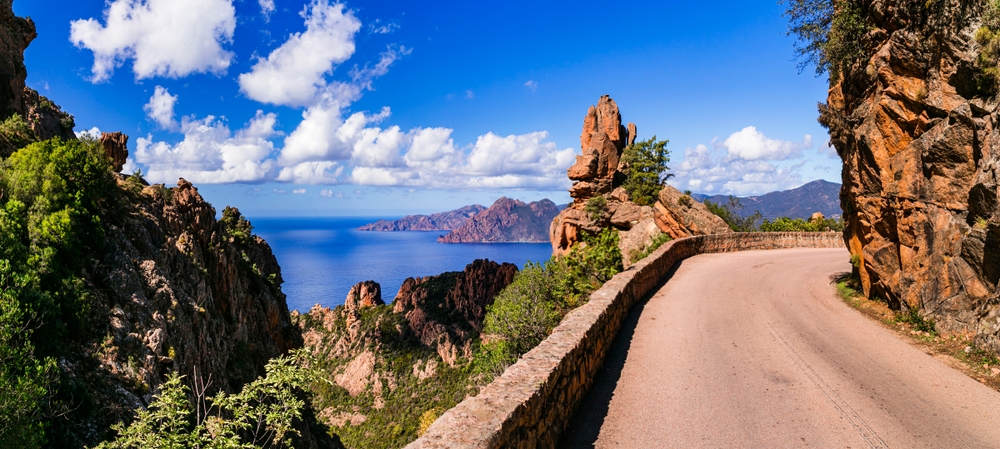
Listed as a UNESCO World Heritage Site since 1983, the Calanques de Piana are one of Corsica’s most spectacular natural sites. These rock formations of red granite, sculpted by erosion, plunge into a deep blue sea and create a striking landscape between Porto and the village of Piana. The cliffs are sometimes 300 metres high and take on evocative shapes: the Heart, the Castle, the Eagle or the Dog’s Head.
The best way to appreciate this natural spectacle is to take a boat trip from Porto, Cargèse or Ajaccio. These trips, which last around an hour, allow you to walk along the cliffs, explore the small sea caves and admire the play of light on the rock, particularly magical at sunrise or sunset. Some companies also offer swimming breaks in secluded coves.
For hiking enthusiasts, the Château Fort trail offers an equally impressive view of the land. This walk, which takes around 2 hours (moderate level), winds its way through the fragrant maquis and offers breathtaking views of the sea. Remember to book your boat trips in advance during the high season (July-August), and opt for early morning departures to take advantage of the best light and calmer seas.
6. The Lavezzi Islands, an unspoilt Mediterranean paradise
Just a stone’s throw off Bonifacio, the archipelago of the Lavezzi islands is a must-see for anyone visiting Corsica-du-Sud. This group of granite islets, protected by the Bouches de Bonifacio Nature Reserve since 1982, offers a picture-postcard backdrop of translucent turquoise waters, fine sandy beaches and rocks sculpted by the wind and waves.
The main island, Lavezzu, can only be reached by boat from Bonifacio (around €36 for an adult, €26 for a child), and is best explored on foot, following the signposted paths. Wear a mask and snorkel to explore the exceptional seabed: multicoloured fish, sea urchins, starfish and posidonia meadows await you in crystal-clear water. There are plenty of snorkelling spots, particularly around the sheltered coves.
The site is also home to the Semillac cemetery and the remains of the Lazaret, witness to the sinking of the frigate Semillante in 1855, which claimed more than 700 victims. This historical dimension adds a moving depth to the beauty of the site. Please note: the archipelago is strictly protected, so it is forbidden to camp there, light fires, pick plants or disturb the wildlife. Take your rubbish with you and respect this natural sanctuary so that it remains unspoilt.
7. The Sanguinaires islands and Pointe de la Parata

Designated a Grand Site de France, the Sanguinaires islands and the Parata peninsula offer one of the most emblematic sunsets in Corsica. These four rocky islets owe their poetic name to the glowing hues they display at dusk, when the setting sun sets their dark granite ablaze. The main island, Mezu Mare, is home to an ancient lighthouse and a 16th-century Genoese tower.
From the port of Ajaccio, several companies offer boat trips lasting 2 to 3 hours, with the option of disembarking on the main island to visit the lighthouse. These outings offer the chance to observe the rich marine fauna: dolphins, crested cormorants, gulls and sometimes even ospreys. The site is also classified Natura 2000 to protect its natural habitats.
For an overland approach, take the customs path from Pointe de la Parata (free parking). This coastal walk of around 8 km round trip to Plage Saint-Antoine offers exceptional panoramic views of the islands and the Gulf of Ajaccio. The path cuts through fragrant scrubland and skirts wild coves with turquoise waters. Bring good shoes, plenty of water and a hat, as there is little shade along the way. The best time for this walk? Late afternoon, to admire the famous sunset from the Genoese tower of La Parata.
8. The Aiguilles de Bavella, a granite cathedral
Dominating the Alta Rocca landscape at an altitude of almost 1,900 metres, the Aiguilles de Bavella are one of the most spectacular massifs in Corsica. These seven pink granite peaks, carved by erosion, form an impressive natural wall that has earned the site three stars in the Michelin Green Guide. The Col de Bavella (1,218 m), crossed by the legendary GR20, offers a magnificent view of these giants of stone.
The Notre-Dame-des-Neiges chapel (Col de Bavella, 20122 Zonza), at the foot of the needles, is the starting point for a number of hikes. The trou de la Bombe, a natural arch carved into the rock, can be reached in 2? hours round trip for a walk accessible to all. Experienced hikers will opt for the climb to Punta Velacu (1,483 m), which offers a 360° panoramic view of the sea, the mountains and even Sardinia on a clear day.
Thrill-seekers will be delighted by the numerous climbing and canyoning routes. The Polischellu waterfalls, a 20-minute drive from the pass, offer refreshing natural pools and jumps into crystal-clear water. The best time to visit the Aiguilles de Bavella is from May to October, avoiding July and August if you’re looking for peace and quiet. Accessible from Zonza via the D268, this exceptional natural site is a photographer’s delight, especially in the early hours of the morning when the low-angled light magnifies the relief.
9. Character villages: Sartène, Zonza and the Alta Rocca
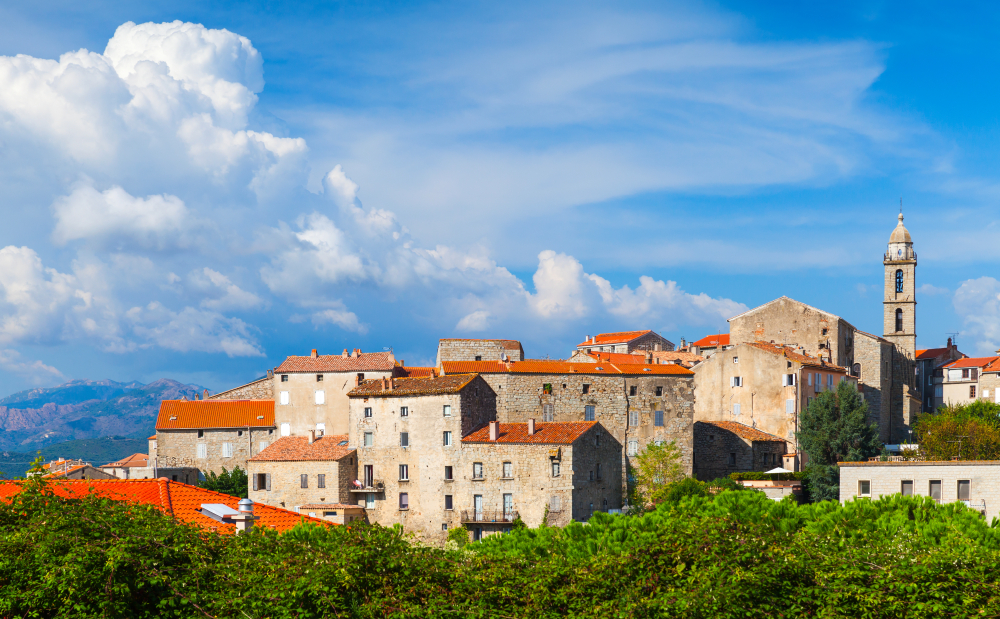
Beyond its coastal and mountainous landscapes, southern Corsica reveals its authentic soul in its hilltop villages. Sartène, described by Prosper Mérimée as “the most Corsican of Corsican towns”, dominates the Rizzanese valley from its promontory. Its grey granite houses, narrow cobbled streets and Place de la Libération, shaded by plane trees, embody the traditional spirit of the island. Don’t miss the Museum of Corsican Prehistory and the Catenacciu procession, a moving Good Friday tradition perpetuated since the 15th century.
Zonza, the gateway to the Aiguilles de Bavella mountain range, is a village of unspoilt authenticity. This mid-mountain village is an ideal base from which to explore the Alta Rocca, a region of laricio pine forests, ancient chestnut groves and megalithic sites. The nearby site of Cucuruzzu-Capula is a remarkable example of a castellu (fortified village) dating from the Bronze Age.
Continue on to Ota and the Spelunca Gorge, a spectacular canyon carved out by the river Porto. The village of Cargèse, founded by Greeks in the eighteenth century, has the unique feature of two churches facing each other: one Catholic, the other Greek Orthodox. Finally, Girolata, accessible only on foot or by boat, offers a haven of absolute peace in its protected gulf. These authentic villages offer the chance to meet passionate craftspeople (cheese-makers, pork butchers, potters) and taste the real Corsican flavours, far from the mass tourist circuits.
10. Exceptional natural sites: Scandola, Cavu valley and Ospedale lake
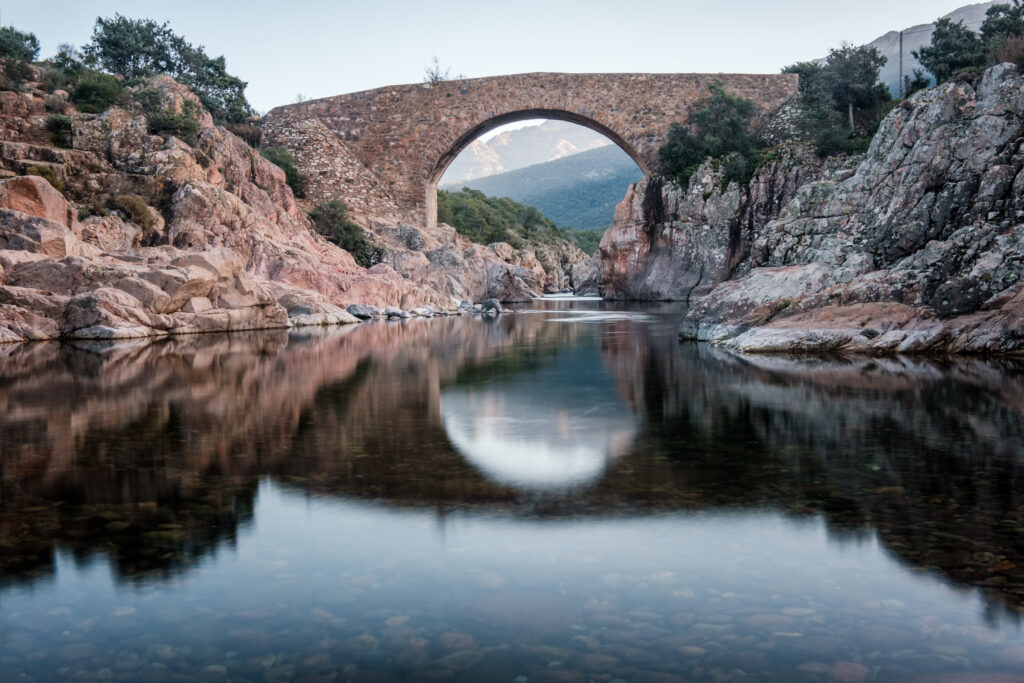
Corse-du-Sud abounds in lesser-known but equally spectacular natural treasures. The Scandola nature reserve, a UNESCO World Heritage site, is only accessible by boat from Calvi or Porto. This biodiversity sanctuary features red porphyry volcanic cliffs plunging into an intense blue sea. Excursions here offer the chance to spot ospreys, dolphins and colonies of red coral in a breathtaking setting.
The Cavu valley, near Zonza, is a paradise for lovers of wild swimming. A succession of natural pools of crystal-clear freshwater invite you to relax and try your hand at canyoning. The path along the river runs through lush forest, which is welcome cool in summer. Bring your water shoes to explore the various pools in complete safety.
Lac de l’Ospedale (20137 Porto-Vecchio), at an altitude of 1,000 metres, offers a peaceful setting for walks and picnics. Surrounded by laricio pines, this artificial lake with its emerald waters contrasts with the coastal scenery. A footpath around the lake takes around 1? hours. Nearby, the Piscia di Ghjaddu waterfall (cascade du jet de la jument) unveils a 70-metre-high veil of water after a 45-minute walk through the forest. The Ospedale forest, with its century-old trees and pozzines (wetlands), is a refreshing green setting on hot summer days. These natural sites allow you to discover another facet of Corse-du-Sud, one that is more secret and wild.
In conclusion, a visit to Corse-du-Sud is a journey to the heart of unspoilt nature between sea and mountains. From the breathtaking cliffs of Bonifacio to the turquoise waters of Palombaggia, from the authentic villages of the Alta Rocca to the majestic peaks of Bavella, each place reveals a unique facet of the Isle of Beauty. Whether you’re a fan of idleness on heavenly beaches, a keen hiker in the mountains or curious about Corsica’s heritage, this region will win you over with its diversity and authenticity. Don’t hesitate to use the Navaway audioguide tour to discover Ajaccio, the ideal gateway to all these wonders, and let yourself be guided in your exploration of Corse-du-Sud in complete autonomy.
FAQ : Visiting Corse-du-Sud
When is the best time to visit Corse-du-Sud?
The ideal time to visit Corse-du-Sud is from May to June and September to October. During these months, you’ll enjoy pleasant temperatures (20-28°C), sunny weather and, above all, much more reasonable tourist numbers than in July and August. Accommodation prices are also more affordable. Spring offers the advantage of a particularly fragrant maquis in flower, while autumn delights with its warm colours and the mildness of the sea, which is still ideal for swimming.
How many days should I allow to visit Corse-du-Sud?
To discover the main sites in Corse-du-Sud, allow at least a week. This will allow you to visit Bonifacio and Porto-Vecchio (2 days), explore Ajaccio and the Sanguinaires islands (1-2 days), enjoy the most beautiful beaches (2 days) and discover the Aiguilles de Bavella and the hinterland (2 days). For a more complete immersion experience, including hikes, boat trips and authentic villages, allow 10 to 15 days. South Corsica is well worth taking the time to soak up its unique atmosphere.
Do I need to hire a car to visit Corse-du-Sud?
Hiring a car is highly recommended, if not essential, if you want to visit Corse-du-Sud on your own. Public transport is limited, and many natural sites, beaches and inland villages are only accessible by car. Choose a car with good ground clearance if you plan to take mountain roads or access isolated beaches. Book your vehicle well in advance, especially in high season, and be prepared for winding roads that considerably lengthen journey times (allow 1 hour for 50 km in the mountains).
Where to stay in Corse-du-Sud: Ajaccio, Bonifacio or Porto-Vecchio?
Your choice of base depends on your priorities. Ajaccio, the regional capital, offers the widest choice of accommodation, restaurants and services, with a good balance between town, culture and access to the beaches. It’s the ideal starting point for visiting Ajaccio and travelling north and west. Bonifacio has an exceptional setting and is close to the Lavezzi islands, but is more expensive and very busy in summer. Porto-Vecchio combines the liveliness of a seaside resort with direct access to the most beautiful beaches (Palombaggia, Santa Giulia) and is an excellent base for exploring the south and the Alta Rocca. For more serenity, consider inland villages such as Zonza or Sartène.
What culinary specialities can you try in Corse-du-Sud?
Corsican gastronomy is a must during your stay. Among the specialities you must try are Corsican charcuterie (coppa, lonzu, figatellu, prisuttu), PDO cheeses (fresh or dried brocciu, Corsican tome), Corsican soup, cannelloni with brocciu, veal with olives, brocciu fritters, canistrelli (dried biscuits), fiadone (brocciu and lemon cake) and homemade jams. As for drinks, try Corsican wines (Patrimonio, Ajaccio, Figari), myrtle liqueur and the local Pietra beer. The local markets in Ajaccio, Bonifacio and Porto-Vecchio are perfect for discovering and buying these local products direct from the producers.
200 audioguided tours for cities all around the world
Download